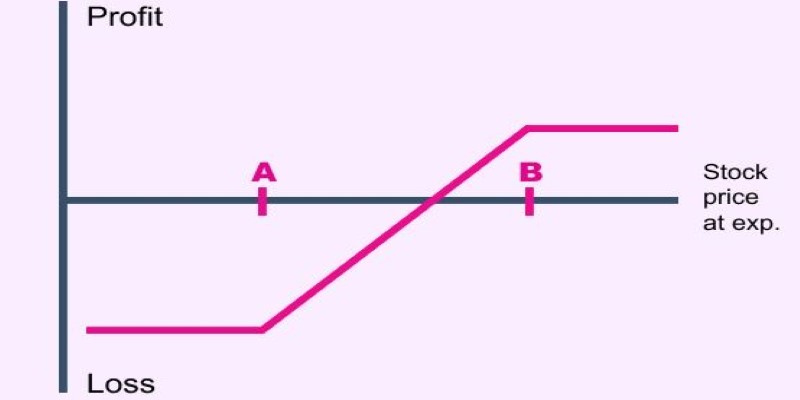Healthy Grocery Shopping: 3 Simple Tips for Better Eating
Advertisement
Prevention of health is not an exception, as it begins with what we consume from supermarkets. The decisions one makes such as these influence the food one takes and consequently the health of the individual. This is primarily because there are so many choices and advertising processes associated with the unhealthy food business. If you follow a plan before shopping, you are bound to eat healthily, cut costs, and adopt a better lifestyle. Here are three valuable tips that help you to save money during purchases in the grocery stores.
1. Plan for Smarter Shopping
 It is always wise to have a meal plan as well as design the list that you are supposed to shop before you leave your home. This helps one not to be easily carried away by his impulses and make unwanted purchases.
It is always wise to have a meal plan as well as design the list that you are supposed to shop before you leave your home. This helps one not to be easily carried away by his impulses and make unwanted purchases.
Make a Grocery List Based on Healthy Meals
This means that shoppers who physically go to the store without any specific list are likely to make unplanned purchases, which may result in unhealthy foods such as sugary beverages, cakes, burgers, etc. However, it is better to prepare your meals for the week ahead and create a shopping list of those particular foods.
A balanced shopping list should include:
- Fruits and vegetables: Fresh, frozen, or canned (without added sugar or salt).
- Whole grains: Brown rice, quinoa, whole wheat pasta, oats, or whole grain bread.
- Lean proteins: Chicken, fish, eggs, tofu, beans, or lentils.
- Healthy fats: Avocados, nuts, seeds, olive oil, or nut butter.
- Dairy or dairy alternatives: Greek yogurt, low-fat cheese, or unsweetened almond milk.
Having a list keeps you focused and prevents unnecessary spending on unhealthy foods.
Stick to the Outer Aisles of the Grocery Store
Most grocery stores are designed to place fresh, whole foods along the outer aisles while processed, packaged foods fill the middle aisles. Sticking to the outer sections helps you focus on fresh produce, meats, and dairy rather than processed snacks and sugary cereals.
If you do go into the middle aisles, look for whole grains, nuts, seeds, and canned goods with no added preservatives. Avoid aisles with soda, chips, candy, and instant meals filled with artificial ingredients.
Never Shop When You're Hungry
Hunger leads to cravings, and cravings lead to bad decisions. When you're hungry, your body naturally gravitates toward high-calorie, sugary, and processed foods. To avoid this, eat a balanced meal or snack before heading to the store.
A good pre-shopping snack includes:
- A handful of nuts and an apple.
- A slice of whole wheat toast with peanut butter.
- Yogurt with fresh berries.
When you're full, you’re more likely to stick to your list and avoid junk food temptations.
Set a Budget for Healthy Eating
Many people believe that eating healthy is expensive, but with the right approach, it can be budget-friendly. To make the most of your grocery budget:
- Buy seasonal fruits and vegetables, which are fresher and more affordable.
- Choose store-brand products that offer the same quality as name brands at a lower price.
- Purchase staple items like rice, beans, and oats in bulk to save money.
- Use coupons and store loyalty programs to get discounts on nutritious foods.
A little planning goes a long way in making healthy eating both affordable and sustainable.
2. Choose Whole, Unprocessed Foods
Opting for whole, unprocessed foods is a key step toward a healthier diet. These foods are packed with essential nutrients and free from artificial additives, making them a superior choice for overall well-being.
Read Labels to Avoid Hidden Ingredients
Food packaging can be misleading. Many products labeled as “healthy” or “natural” contain added sugars, sodium, and artificial preservatives. Always check the ingredients list and nutrition label.
Look for foods with simple, recognizable ingredients. If a product contains a long list of chemicals or added sugars (like high fructose corn syrup), it’s best to avoid it. Choose foods with:
- No added sugars or artificial sweeteners.
- Minimal preservatives and natural ingredients.
- High fiber, protein, and essential nutrients.
Prioritize Fresh Over Processed
Whole foods are always the better choice. Processed foods often contain excess sugar, sodium, and unhealthy fats that contribute to weight gain and health problems.
For example:
- Instead of flavored yogurt with added sugar, choose plain Greek yogurt and add fresh fruit.
- Instead of white bread, opt for whole wheat or sprouted grain bread.
- Instead of chips or crackers, snack on nuts, seeds, or fresh veggies with hummus.
The fewer ingredients a product has, the better it is for your health.
Go for Whole Grains Over Refined Grains
Refined grains, such as white bread, white rice, and traditional pasta, lose much of their nutritional value during processing. In contrast, whole grains are packed with fiber, vitamins, and minerals that promote better digestion and keep you feeling fuller for longer.
Consider these simple, healthier swaps:
- Choose brown rice over white rice.
- Opt for whole wheat or chickpea pasta instead of regular pasta.
- Replace sugary instant oatmeal with nutrient-rich steel-cut oats.
Small changes like these can elevate your diet while maintaining flavor and variety.
3. Focus on Nutrient-Dense Foods
 Eating nutrient-dense foods ensures your body gets the essential vitamins, minerals, and energy it needs to thrive.
Eating nutrient-dense foods ensures your body gets the essential vitamins, minerals, and energy it needs to thrive.
Fill Your Cart with a Variety of Fruits and Vegetables
Fruits and vegetables are packed with essential vitamins, minerals, and antioxidants. Eating a variety of colors ensures that you get different nutrients that support overall health.
Here’s why different colors matter:
- Red and orange (tomatoes, carrots, sweet potatoes): High in vitamin C and beta-carotene.
- Green (spinach, kale, broccoli): Rich in iron, fiber, and calcium.
- Purple and blue (blueberries, eggplants, grapes): Loaded with antioxidants for brain health.
- Yellow (bananas, bell peppers, corn): Great for digestion and heart health.
Try to include at least three different colors in every meal to maximize nutrition.
Choose Lean Proteins for Energy and Muscle Health
Protein is essential for maintaining muscle, boosting metabolism, and keeping you full. Instead of processed meats like bacon and sausages, which are high in sodium and preservatives, choose:
- Chicken breast or turkey.
- Fish like salmon, tuna, or tilapia.
- Plant-based proteins such as lentils, chickpeas, and black beans.
- Eggs, which are packed with protein and essential vitamins.
Balancing your meals with a good source of protein helps prevent overeating and keeps you satisfied longer.
Conclusion
Healthy eating starts at the grocery store. When you plan ahead, choose whole foods, and focus on nutrient-dense options, you set yourself up for success. Each small change, like swapping refined grains for whole grains or choosing fresh produce over processed snacks, adds up over time. With consistency, healthy grocery shopping becomes second nature, leading to better eating habits and overall well-being. The next time you head to the store, keep these three keys in mind: plan ahead, choose whole foods, and focus on nutrient-rich options.
On this page
1. Plan for Smarter Shopping Make a Grocery List Based on Healthy Meals Stick to the Outer Aisles of the Grocery Store Never Shop When You're Hungry Set a Budget for Healthy Eating 2. Choose Whole, Unprocessed Foods Read Labels to Avoid Hidden Ingredients Prioritize Fresh Over Processed Go for Whole Grains Over Refined Grains 3. Focus on Nutrient-Dense Foods Fill Your Cart with a Variety of Fruits and Vegetables Choose Lean Proteins for Energy and Muscle Health ConclusionAdvertisement












